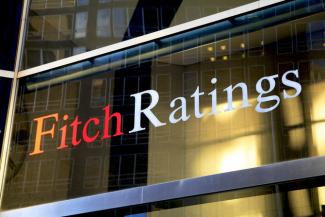
Unraveling the Latest Debt Downgrade by Fitch
Unraveling the Latest Debt Downgrade by Fitch and its Eerie Parallels to the S&P Downgrade in 2011.
Introduction
Financial markets are constantly swayed by economic indicators and the creditworthiness of nations. Recently, the global financial community witnessed another significant event as Fitch Ratings, one of the world's leading credit rating agencies, downgraded the debt of a major economy, the United States of America. This move echoed an eerily familiar scenario that occurred years ago when Standard & Poor's (S&P) downgraded the USA, sending shockwaves across the world. In this blog post, we will delve into the latest debt downgrade by Fitch, analyze its implications, and draw parallels to the historic S&P downgrade of the past.
Fitch's Latest Debt Downgrade
Fitch Ratings, renowned for its assessments of credit risks, recently made headlines when it downgraded the United States credit worthiness. A debt downgrade typically occurs when the credit rating agency determines that a nation's ability to meet its financial obligations has weakened, signaling increased credit risk. The downgrade can have far-reaching consequences on the country's borrowing costs, investor confidence, and overall economic outlook.
Fitch's decision to downgrade was probably based on a combination of factors, including sluggish real economic growth (that is GDP increasing beyond the effect of inflation), the USA’s rising debt levels, and a lack of meaningful fiscal reforms. Such a move can have cascading effects on the country's financial stability, leading to higher borrowing costs and tighter credit conditions, which can in turn hamper economic growth.
Parallel to S&P's Downgrade Years Ago
This latest debt downgrade by Fitch bears an uncanny resemblance to the historic debt downgrade carried out by S&P several years ago. Back in 2011, S&P shocked the global financial community when it downgraded the debt of The United States from its long-standing AAA. This marked the first time in history that the United States lost its top-notch credit rating.
The S&P downgrade came amidst a contentious political environment, with policymakers locked in a heated debate over raising the debt ceiling. The agency cited concerns over the nation's rising debt trajectory, political gridlock in addressing fiscal challenges, and the absence of comprehensive long-term solutions as primary reasons for the downgrade.
Lessons Learned
The parallels between the latest Fitch downgrade and the historic S&P downgrade underscore several important lessons for governments and investors alike:
• Fiscal Responsibility: Nations must exercise prudent fiscal management and prioritize long-term sustainability. High debt levels and lack of fiscal reforms can adversely impact credit ratings, leading to higher borrowing costs.
• Political Stability: Political stability is crucial in addressing fiscal challenges. Not that we all must “get along”, but at least function.
• Economic Growth: Sustainable economic growth is instrumental in maintaining a country's creditworthiness. Policy decisions that hinder growth can hurt a nation's financial position. We have seen a series of horrible decisions to spend money for the past 4 administrations and it did not matter which party was in control, sadly.
• Market Confidence: Credit rating downgrades can cause market turbulence and volatility. Building and maintaining market confidence is essential in attracting investments and fostering economic stability.
Conclusion
The recent debt downgrade by Fitch and its striking similarities to the historic S&P downgrade serve as potent reminders of the importance of fiscal responsibility and political stability for nations. Governments must prioritize a stable monetary policy, low inflation, cutting spending and borrowing to maintain their creditworthiness and ensure investor confidence.
This could add to a rocky ride for investors. It could also mean the cost to borrow may rise as well. This was a warning shot across the bow of The United States. The path we are on is unsustainable in the long run. This is also the reason why Global Investing can play an important part of an investor’s portfolio. As well as looking at the overall allocation of an investor’s portfolio.
Have concerns? Give us a call at 609-567-1884 or email us at mail@clarkassociates.net
Important items to note! All information is based on sources deemed reliable, but no warranty or guarantee is made as to its accuracy or completeness. Neither the information nor any opinion expressed herein constitutes a solicitation for the purchase or sale of any securities and should not be relied on as financial advice. Past performance is no guarantee of future results. All investing involves risk, including the potential loss of principal, and there can be no guarantee that any investing strategy will be successful.

